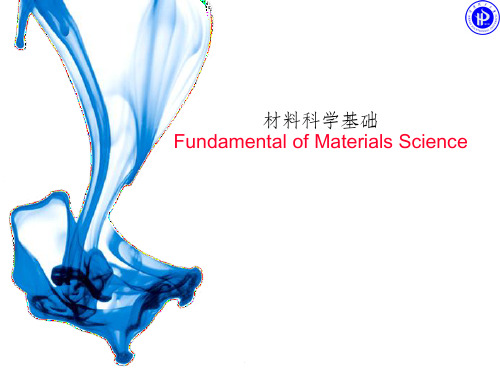材料科学基础英文课件3
- 格式:pdf
- 大小:904.93 KB
- 文档页数:20






1
What will it happen with temperature Nanjing University of Technology
(a)(b)(c)(d)(e)Nanjing University of Technology
Crystal
Glass
arranged in different patterns
Nanjing University of Technology
V & Q
T m
V & Q changes associated with heating and cooling in systems susceptible to glass formation.
: melting temperature
It shows linear relation
Nanjing University of Technology13
melt
Cooling
down
=
TΔ
T
Nucleation
f(x,T) = exp(-x/T) function
Nanjing University of Technology
W(r
Metastable zone of undercooling: no stable nuclei form at these
T m shown above.
Kinetic Considerations
forth across the liquid/solid interface:
Time –Temperature –Transformation Curves (TTT)
Most favorable conditions for crystallization (and so least
Note: for smaller transformation volumes, t
Nanjing University of Technology67
Nanjing University of Technology
Structural Approach to Glass Formation Hence, local structure is disordered, but there
Nanjing University of Technology
form loose network. structures.
Pauling's packing rule: satisfies Zachariasen's
•
All Rules are Satisfied: SiO
Pauling's packing rule:•violates Zachariasen's rule #2.•
Rules are Not Satisfied: Na
modifying ions
Nonbridging Oxygens
glass forming ions Al O does not form a glass.
octahedral CN preferred in Al2O3 violates Zachariasen's rule #1.
aluminophosphate
Nanjing University of Technology Nanjing University of Technology
Nanjing University of Technology Nanjing University of Technology98
Glasses
Alkalis are structural modifiers:
Every alkali ion creates one
Every alkali oxide 'molecule'
Nanjing University of Technology103
Effects of Alkaline earth oxides
Y↓, O
b ↓, O
nb
↑, structure “open”, ion easy to transfer,
TEC ↑, σ↑, η↓
•T
g (B
2
O
3
) ~260ºC (2D-network)
•T
g (SiO
2
) ~1200ºC (3D-network)
What happens when alkali oxide is added to a borate glass?
added Fewer network bridging。